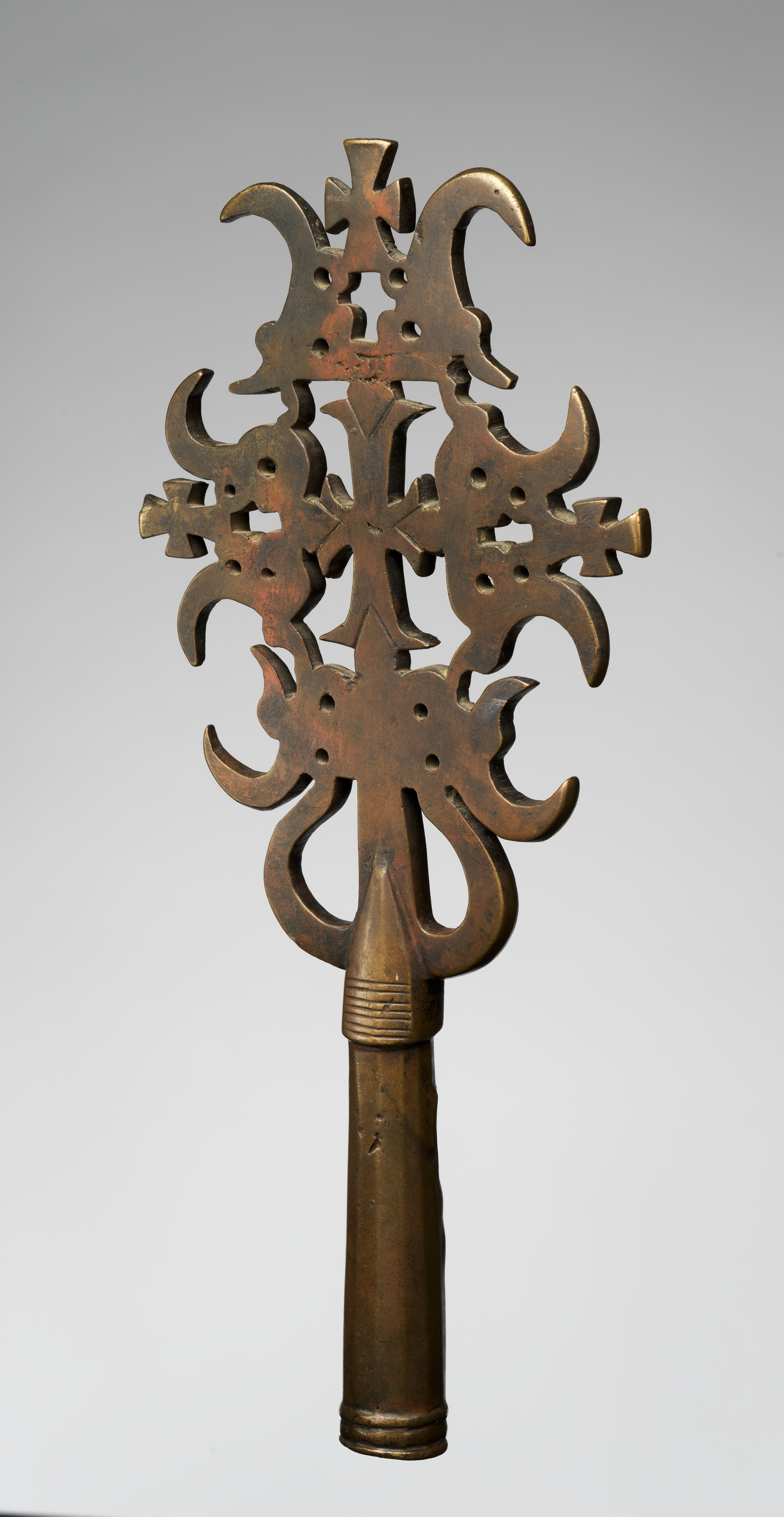Mäsqälä qǝddase (liturgical cross)
Imbued with symbolic meaning and protective powers, crosses have been used as a sign of Ethiopian Orthodox Christian devotion since at least the fourth century A.D. Individual patrons commissioned crosses such as this example to give to religious institutions as acts of devotion. Here, the central trifoliate cross is amplified by a multiplicity of outwardly projecting pattée crosses that suggest organic luxuriance. The openings are both aesthetic and functional, heightening the object’s intricate silhouette while minimizing its weight. The earliest in the Museum’s collection from the Lasta region, this cross is contemporary with the later rock-hewn churches at Lalibela. Like other crosses and architectural elements typical at that site, this cross exhibits the split palmette motif. The palmette extends from circular joints at its base to form two opposed half-lunettes surrounding a pattée cross at the upper limits and sides of the primary cross. This motif alludes to the cross as the Tree of Life as well as to the divine aureole of Christ borne on the wings of the Four Beasts. The complex configuration relates this cross to a processional cross in the Walters Art Museum in Baltimore, but here the design is more elegantly attenuated and the execution is crisper and more sharply resolved.
Kristen Windmuller-Luna, 2014
This image cannot be enlarged, viewed at full screen, or downloaded.
This artwork is meant to be viewed from right to left. Scroll left to view more.




